Themed collection Most popular 2022 main group, inorganic and organometallic chemistry articles

Activation of Si–H and B–H bonds by Lewis acidic transition metals and p-block elements: same, but different
In this Perspective we compare the ability of transition metals and p-block Lewis acids to activate electrophilically hydrosilanes and hydroboranes. The mechanistic similarities and dissimilarities in different catalytic transformations are analyzed.
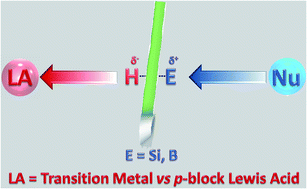
Chem. Sci., 2022,13, 7392-7418
https://doi.org/10.1039/D2SC02324E
Air and water stable germacarbonyl compounds
Air and water stable germacarbonyl compounds are reported. Thio- 12 and selenogermaamide 13 react with CuX at ambient conditions to afford Cu(I) complexes. Selective binding of 12 and 13 with CuCl and CuBr in a mixture of CuX is seen (X = Cl, Br, I).
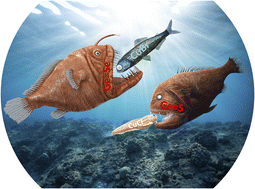
Chem. Sci., 2022,13, 12382-12388
https://doi.org/10.1039/D2SC01869A
Acid-base-induced fac → mer isomerization of luminescent iridium(III) complexes
From fac to mer and back: a clean, fast and simple procedure for the transformation of fac-Ir(C^N)3 complexes into the thermodynamically less stable mer isomers is described. The process enables the interconversion of luminophores with distinct photophysical properties.

Chem. Sci., 2022,13, 10370-10374
https://doi.org/10.1039/D2SC02808E
Cooperative B–H bond activation: dual site borane activation by redox active κ2-N,S-chelated complexes
Redox-active ruthenium complexes supported by hemilabile κ2-N,S-chelated ruthenacycles undergo unusual dual site B–H bond activation through metal–ligand cooperation with free and bulky boranes.

Chem. Sci., 2022,13, 8567-8575
https://doi.org/10.1039/D2SC00907B
NHC induced radical formation via homolytic cleavage of B–B bonds and its role in organic reactions
Bis-NHC adducts of the type (NHC)2·B2(OR)4 are sources of boryl radicals of the type NHC–BR2˙, which are formed by homolytic B–B bond cleavage.

Chem. Sci., 2022,13, 8321-8333
https://doi.org/10.1039/D2SC02096C
Nitrogen activation and cleavage by a multimetallic uranium complex
Combinations of ligands were used to tune U![[double bond, length as m-dash]](https://www.rsc.org/images/entities/char_e001.gif) N
N![[double bond, length as m-dash]](https://www.rsc.org/images/entities/char_e001.gif) U complexes yielding a U(III)/U(III) nitride, which activates N2. Parallel N2 reduction pathways were identified, leading to the first example of N2 cleavage by U without external alkali reducing agents.
U complexes yielding a U(III)/U(III) nitride, which activates N2. Parallel N2 reduction pathways were identified, leading to the first example of N2 cleavage by U without external alkali reducing agents.
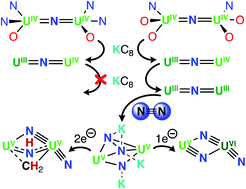
Chem. Sci., 2022,13, 8025-8035
https://doi.org/10.1039/D2SC02997A
Between imide, imidyl and nitrene – an imido iron complex in two oxidation states
A pair of trigonal imido iron complexes ([Fe(NMes)L2]0,−) in two oxidation states is reported. The anionic complex K{crypt.222}[Fe(NMes)L2] is best described as an iron(II) imide.
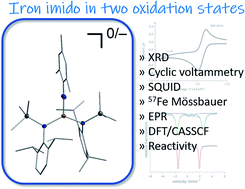
Chem. Sci., 2022,13, 7907-7913
https://doi.org/10.1039/D2SC01088G
Chemical control of spin–lattice relaxation to discover a room temperature molecular qubit
Elucidating the role of specific vibrational modes in spin lattice relaxation is a key step to designing room temperature qubits. We executed an experimental and theoretical study on a series of Cu2+ qubits to increase their operating temperature.
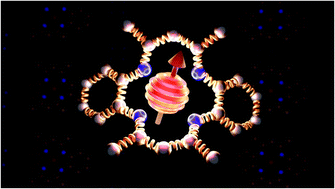
Chem. Sci., 2022,13, 7034-7045
https://doi.org/10.1039/D1SC06130E
Orbital analysis of bonding in diarylhalonium salts and relevance to periodic trends in structure and reactivity
A revised bonding model for diarylhalonium salts, that involves partial s-orbital contribution, provides new insight into periodic trends in structure and reactivity.

Chem. Sci., 2022,13, 6532-6540
https://doi.org/10.1039/D2SC02332F
Composition-driven archetype dynamics in polyoxovanadates
Systems-based elucidation of the polyoxovanadate speciation reveals that heterogroup substitution can transform spherical kegginoids into tubular architectures in a programmable manner.

Chem. Sci., 2022,13, 6397-6412
https://doi.org/10.1039/D2SC01004F
Geometrically constrained square pyramidal phosphoranide
Geometrically constrained, square pyramidal phosphoranide was synthesized, and its reactivity study showed that it is both a nucleophile and reductant.
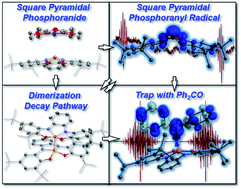
Chem. Sci., 2022,13, 5957-5963
https://doi.org/10.1039/D2SC01060G
A dysprosium single molecule magnet outperforming current pseudocontact shift agents
A robust dysprosium(III) single molecule magnet with large uniaxial magnetic anisotropy induces pseudocontact shifts at almost doubled distance compared to standard shift agents.
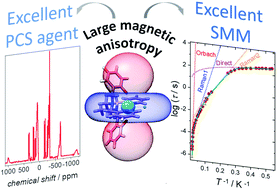
Chem. Sci., 2022,13, 5860-5871
https://doi.org/10.1039/D2SC01619B
Generation of a transient base-stabilised arylalumylene for the facile deconstruction of aromatic molecules
Attempts to form a base-stabilised arylalumylene by reducing an NHC-coordinated diiodoterphenylalane led to a masked dialumene. Reactivity studies showed it decouples to initially aimed arylalumylene, which easily deconstructs less reactive arenes.

Chem. Sci., 2022,13, 5631-5638
https://doi.org/10.1039/D2SC01436J
Access to tetracoordinate boron-doped polycyclic aromatic hydrocarbons with delayed fluorescence and aggregation-induced emission under mild conditions
A series of tetracoordinate boron-doped polycyclic aromatic hydrocarbons have been synthesized under mild conditions, featuring delayed fluorescence and aggregation-induced emission.
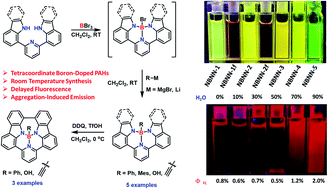
Chem. Sci., 2022,13, 5597-5605
https://doi.org/10.1039/D2SC01722A
Heme compound II models in chemoselectivity and disproportionation reactions
Disproportionation of Cpd II models depends on the electron-richness of the porphyrin ligand; Cpd II with an electron-deficient ligand is difficult to disproportionate, whereas Cpd II with an electron-rich ligand readily disproportionates to form Cpd I as a true oxidant.

Chem. Sci., 2022,13, 5707-5717
https://doi.org/10.1039/D2SC01232D
Thermodynamic equilibrium between locally excited and charge-transfer states through thermally activated charge transfer in 1-(pyren-2′-yl)-o-carborane
Reversible conversion between excited-states is key to many photophysical phenomena. We studied the equilibrium between LE and CT states by time-resolved and temperature-dependent fluorescence, fs- and ns-transient absorption, and LR-TDDFT calculations.
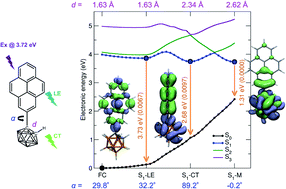
Chem. Sci., 2022,13, 5205-5219
https://doi.org/10.1039/D1SC06867A
Unmasking the constitution and bonding of the proposed lithium nickelate “Li3NiPh3(solv)3”: revealing the hidden C6H4 ligand
We disclose the actual octanuclear nature of the major compound from reacting Ni(COD)2 and PhLi, assigned for more than four decades as ‘Li3NiPh3(solv)3’. We provide a thorough bonding analysis and discuss its potential implications in catalysis.
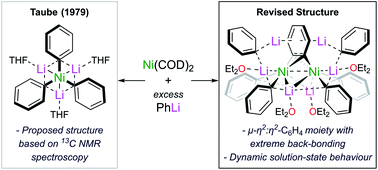
Chem. Sci., 2022,13, 5268-5276
https://doi.org/10.1039/D2SC01244H
Metal binding and interdomain thermodynamics of mammalian metallothionein-3: enthalpically favoured Cu+ supplants entropically favoured Zn2+ to form Cu4+ clusters under physiological conditions
Metallothioneins (MTs) are a ubiquitous class of small metal-binding proteins involved in metal homeostasis and detoxification.

Chem. Sci., 2022,13, 5289-5304
https://doi.org/10.1039/D2SC00676F
The construction of a two-dimensional organic–inorganic hybrid double perovskite ferroelastic with a high Tc and narrow band gap
By using a lead-free AgBi-based scheme, we successfully synthesized a two-dimensional double perovskite ferroelastic (DPA)4AgBiBr8 with high Tc of 375 K and a narrow band gap of 2.44 eV, where DPA is 2,2-dimethylpropan-1-aminium.

Chem. Sci., 2022,13, 4794-4800
https://doi.org/10.1039/D1SC07045B
Unraveling differences in aluminyl and carbene coordination chemistry: bonding in gold complexes and reactivity with carbon dioxide
Aluminyls and carbenes as coordination ligands, although sharing similar electronic properties, reveal fundamental differences in their tunability, bonding to gold and reactivity of their complexes with carbon dioxide.

Chem. Sci., 2022,13, 4623-4634
https://doi.org/10.1039/D2SC00630H
Metal-mediated DNA base pairing of easily prepared 2-oxo-imidazole-4-carboxylate nucleotides
A novel 2-oxo-imidazole-4-carboxylate (ImOC) nucleobase, which can be easily derived from a commercially available uridine analogue, was found to form stable CuII- and HgII-mediated base pairs in DNA duplexes.

Chem. Sci., 2022,13, 3977-3983
https://doi.org/10.1039/D2SC00926A
Lanthanide-mediated tuning of electronic and magnetic properties in heterotrimetallic cyclooctatetraenyl multidecker self-assemblies
A new class of heterotrimetallic COT-based self-assemblies accommodates metals from groups I–III in three different oxidation states and enables tuning of electronic and magnetic properties.
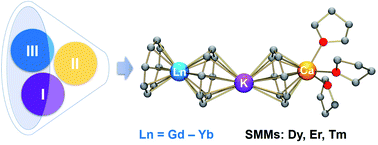
Chem. Sci., 2022,13, 3864-3874
https://doi.org/10.1039/D2SC00631F
Co-crystallisation as a modular approach to the discovery of spin-crossover materials
The switching behaviour of spin crossover cocrystals can be modified through changing the coformer and thus co-crystallisation presents a rapid, facile and highly modular tool for the discovery of new switchable materials.
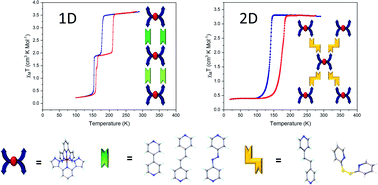
Chem. Sci., 2022,13, 3176-3186
https://doi.org/10.1039/D1SC04956A
Covalency in actinide(IV) hexachlorides in relation to the chlorine K-edge X-ray absorption structure
Chlorine K-edge XANES of An(IV) hexachlorides, calculated with multiconfiguration wavefunction theory, is interpreted in terms of similar metal–ligand covalency along the An = Th–Pu series.

Chem. Sci., 2022,13, 3194-3207
https://doi.org/10.1039/D1SC06454A
Versatile post-functionalisation strategy for the formation of modular organic–inorganic polyoxometalate hybrids
A versatile modular approach has been developed for incorporating different metal-oxo nanoclusters with characteristic structures into a single hybrid molecule by covalently linking them with polyol ligands.

Chem. Sci., 2022,13, 2891-2899
https://doi.org/10.1039/D1SC06326J
Photocytotoxicity and photoinduced phosphine ligand exchange in a Ru(II) polypyridyl complex
New Ru(II) complexes exhibit selective ligand dissociation driven by an excited state trans-type influence. The complexes are not toxic to triple-negative breast cancer cells in the dark, but induce cell death upon irradiation with visible light.

Chem. Sci., 2022,13, 1933-1945
https://doi.org/10.1039/D1SC05647F
Combining metal–metal cooperativity, metal–ligand cooperativity and chemical non-innocence in diiron carbonyl complexes
The PNNP expanded pincer ligand can bind two iron centers in close proximity and display heterolytic and homolytic metal–ligand cooperativity.
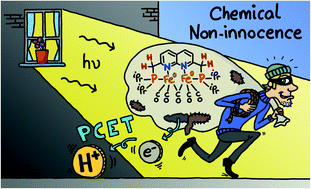
Chem. Sci., 2022,13, 2094-2104
https://doi.org/10.1039/D1SC05473B
Unveiling ultrafast dynamics in bridged bimetallic complexes using optical and X-ray transient absorption spectroscopies
In photosynthetic systems employing multiple transition metal centers, the properties of charge-transfer states are tuned by the coupling between metal centers.
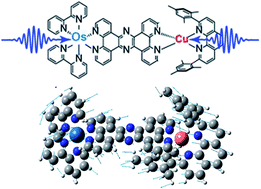
Chem. Sci., 2022,13, 1715-1724
https://doi.org/10.1039/D1SC05034F
Cu(II)-based DNA labeling identifies the structural link between transcriptional activation and termination in a metalloregulator
Herein, we exploit site-directed Cu(II)-labeling to measure the DNA conformations in each step of the transcription cycle of the Copper Efflux Regulator (CueR), in order to establish how transcription is activated and terminated.

Chem. Sci., 2022,13, 1693-1697
https://doi.org/10.1039/D1SC06563G
Fully fused boron-doped polycyclic aromatic hydrocarbons: their synthesis, structure–property relationships, and self-assembly behavior in aqueous media
A series of fully fused boron-doped polycyclic aromatic hydrocarbons is synthesized. Self-assembly of an amphiphilic derivative can be controlled by addition of a Lewis base or an acid in aqueous media.
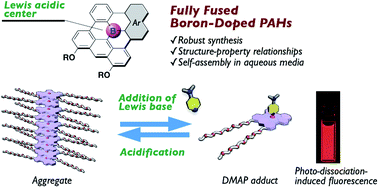
Chem. Sci., 2022,13, 1484-1491
https://doi.org/10.1039/D1SC06710A
About this collection
This specially curated collection pulls together some of the most popular articles from 2022 in the fields of main group, inorganic and organometallic chemistry. The collection presents some outstanding contributions to the field, ranging from dysprosium single molecule magnets to air and water stable germacarbonyl compounds, and as with all Chemical Science articles – they are all completely free to access and read. We hope you enjoy browsing through this collection.
If a particular article has inspired you, do feel free to share on social media using the buttons on each article landing page and use our hashtag: #ChemSciMostPopular